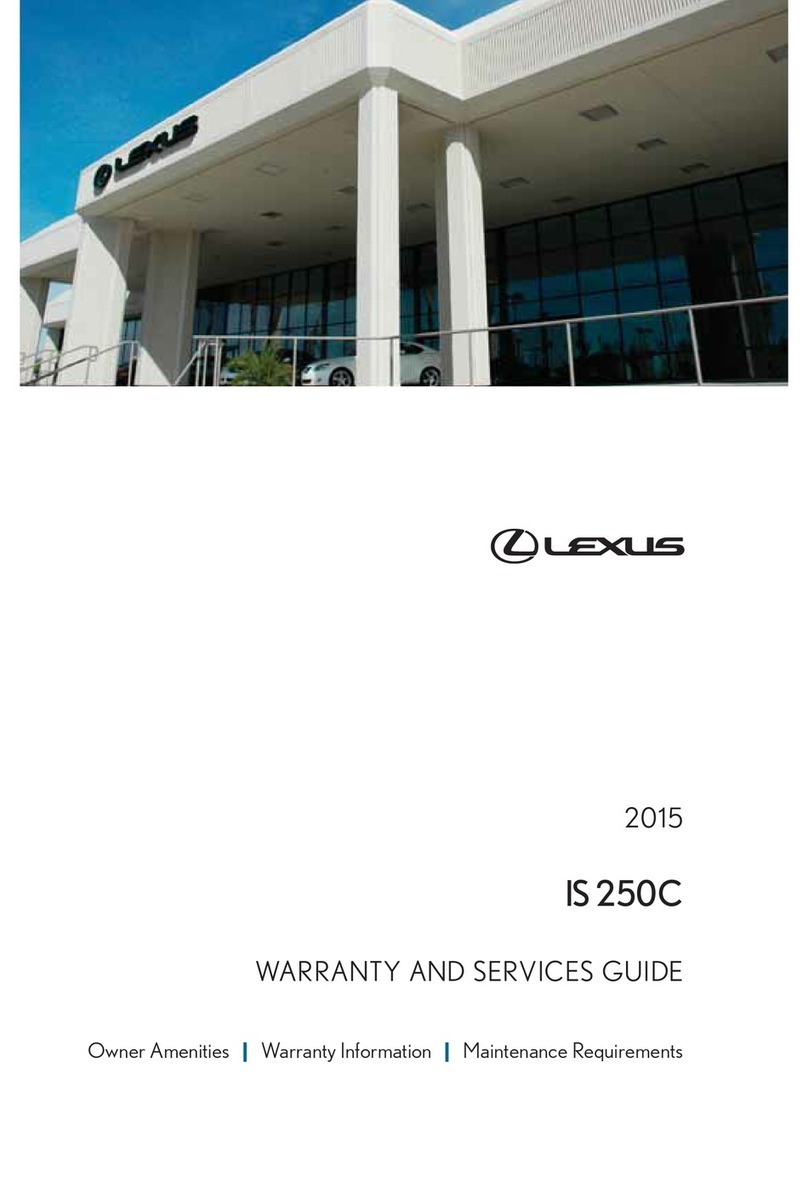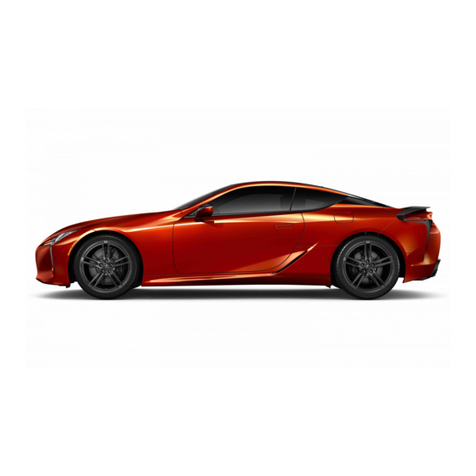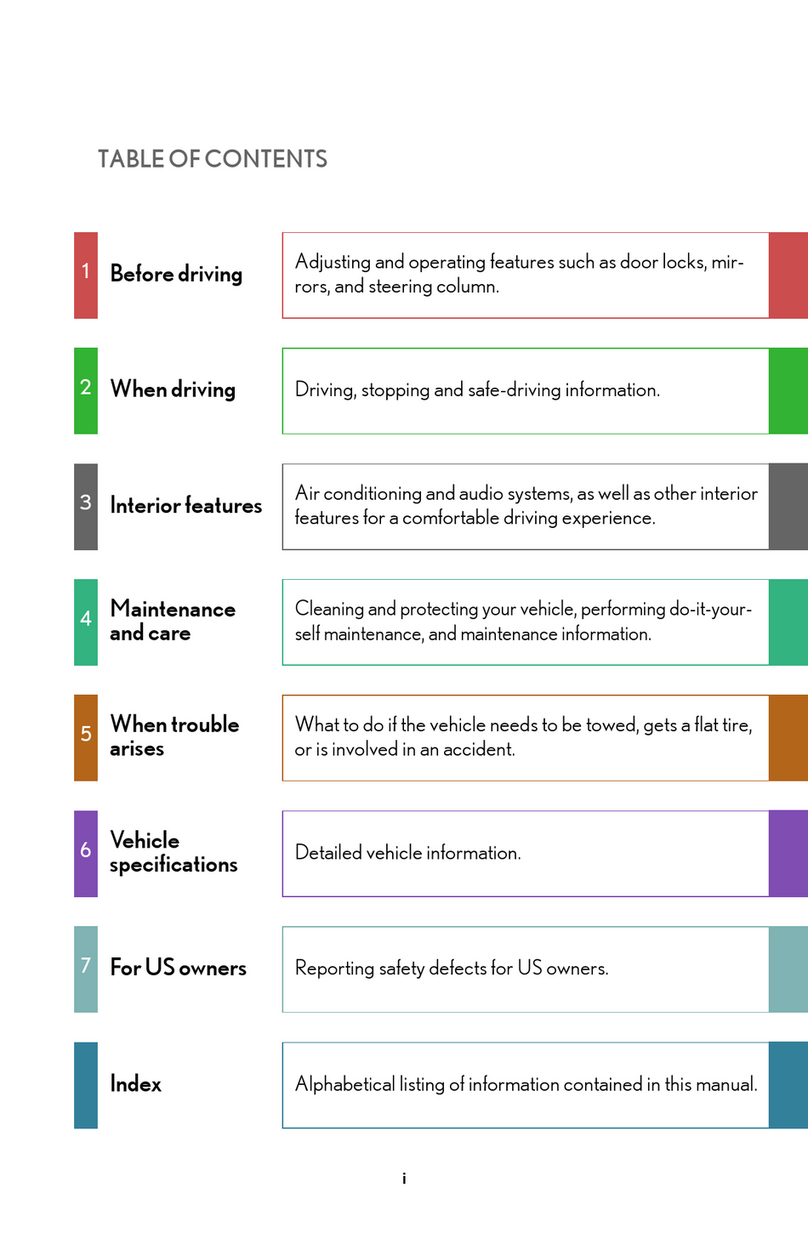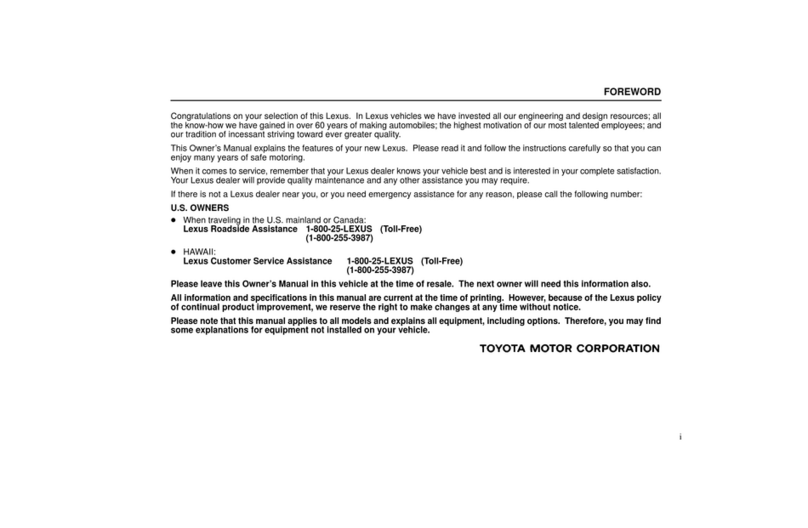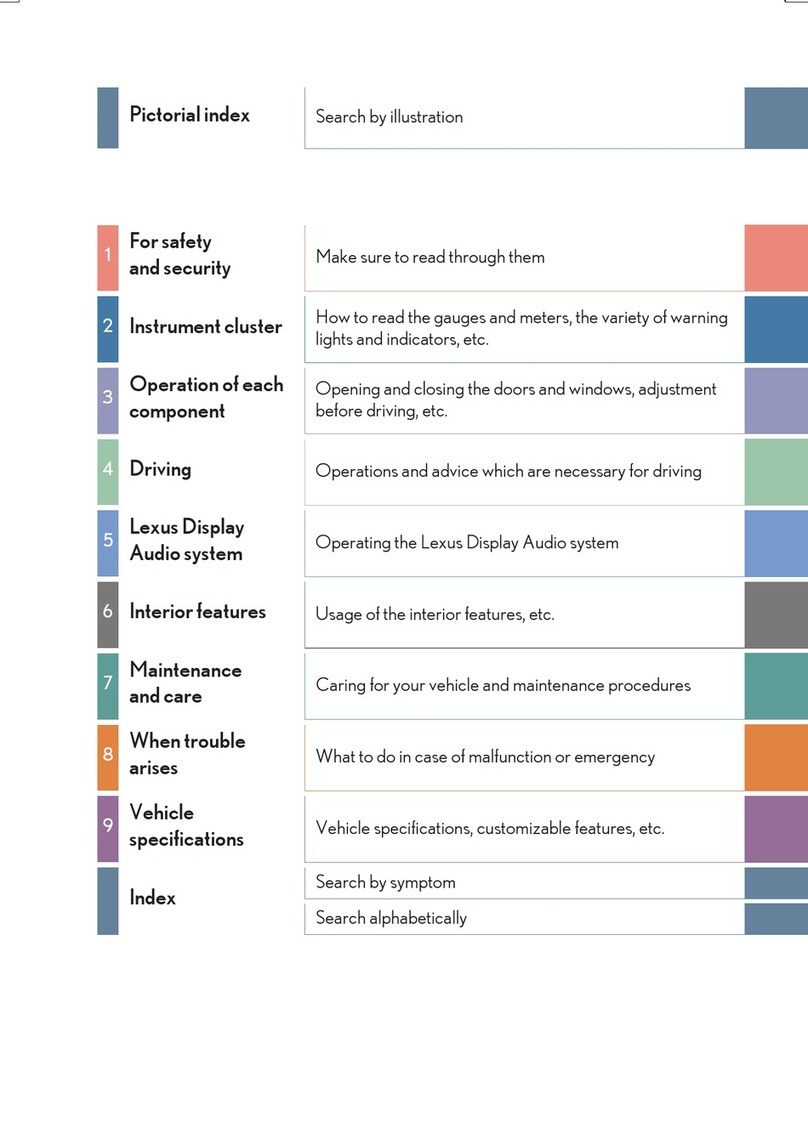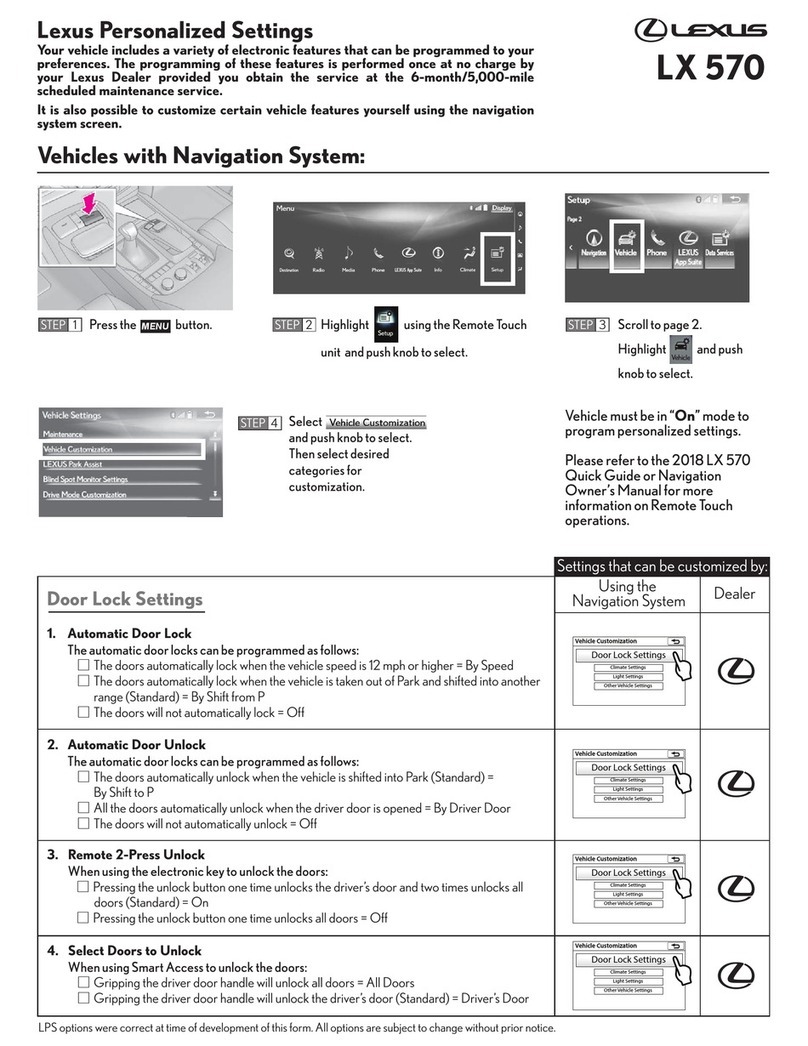
6
Hybrid Component Locations & Descriptions
Component Description
12 Volt Auxiliary Battery
Supplies electricity to the electrical components.
Hybrid Vehicle (HV)
Battery Pack Supplies electrical power to generator (MG1) and motor (MG2) in
accordance with the driving conditions of the vehicle.
Recharged by generator (MG1) and motor (MG2) in accordance
with the SOC and the driving conditions of the vehicle.
Power Cables Connects the HV battery, inverter with converter assembly, hybrid
vehicle transmission assembly and compressor with motor assembly.
Inverter/
Converter
DC-DC
Converter
for 12 Volt
Auxiliary
Battery
Steps down the HV battery nominal voltage of DC 230.4 V to
approximately DC 14 V in order to supply electricity to the electrical
components, as well as to recharge the auxiliary battery.
Motor
Generator
ECU
Controls the inverter and boost converter in accordance with the
signals received from the hybrid vehicle control ECU assembly , thus
operating generator (MG1) and motor (MG2) as either a generator or
motor.
Boost
Converter Boosts the HV battery nominal voltage of DC 230.4 V up to a
maximum voltage of DC 650 V and vice versa (steps down DC 650 V
to DC 230.4 V).
Inverter Converts the direct current from the boost converter into alternating
current for generator (MG1) and motor (MG2), and vice versa (from
AC to DC).
Gasoline Engine
The 2AR-FSE engine is a high-expansion ratio Atkinson cycle engine
which is compatible with the hybrid system and which generates drive
force for driving and energy for electricity generation.
Electric Motor
Motor (MG2), which is driven by electrical power from generator
(MG1) and the HV battery, generates motive force for the drive
wheels.
During braking, or when the accelerator pedal is not depressed, it
generates high-voltage electricity to recharge the HV battery.
Electric Generator Generator (MG1), which is driven by the engine, generates
high-voltage electricity in order to operate motor (MG2) and charge
the HV battery. Also, it functions as a starter to start the engine.
A/C Compressor
(with inverter) Is driven at a speed calculated by the air conditioning amplifier
assembly, receives drive requests from the hybrid vehicle control ECU
and takes in, compresses and discharges refrigerant.
Fuel Tank and Fuel Line
The fuel tank provides gasoline via a fuel line to the engine. The fuel
line is routed along the left side and center tunnel under the floor pan.
*Numbers in the component column apply to the illustrations on the following page.
